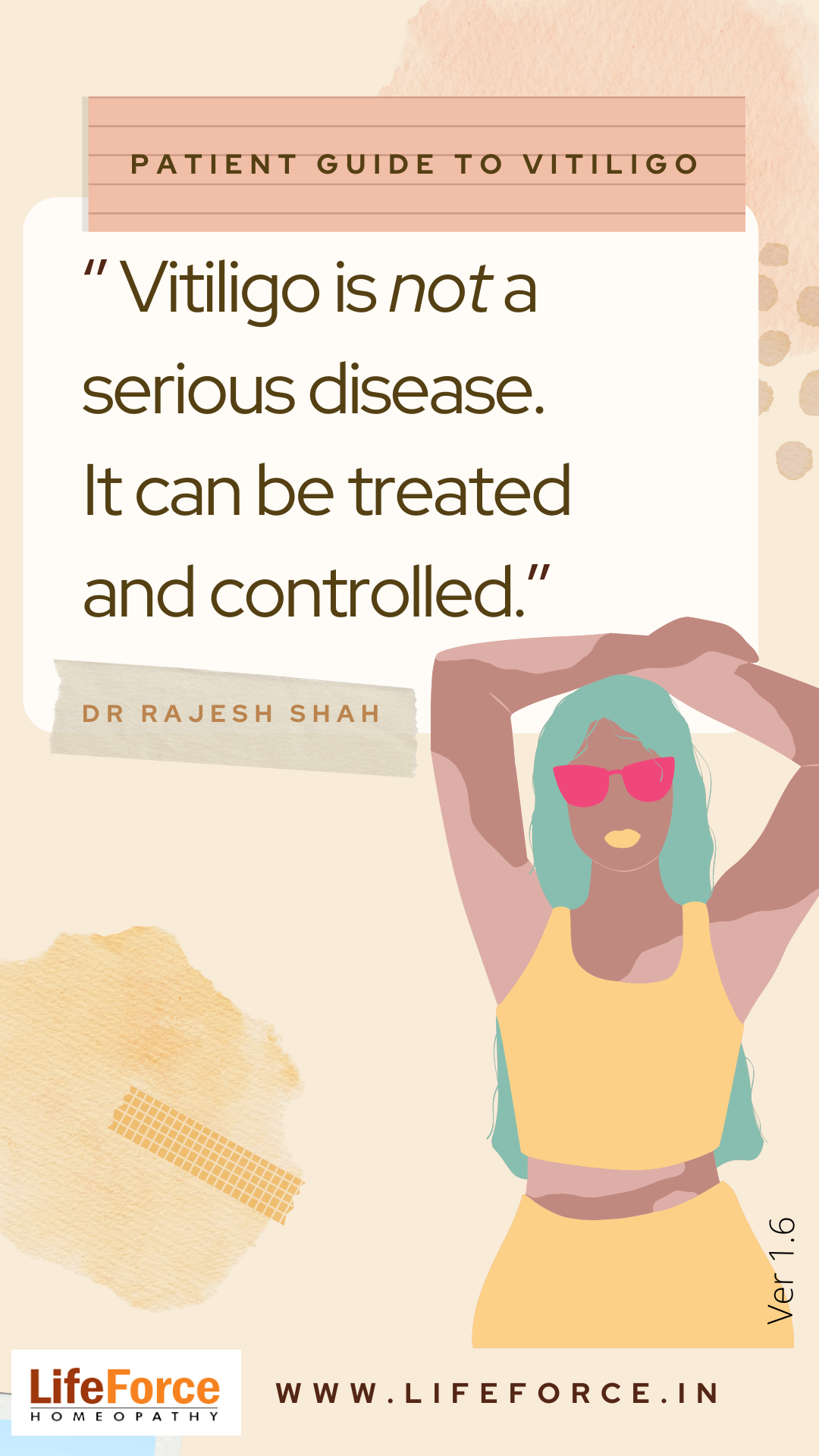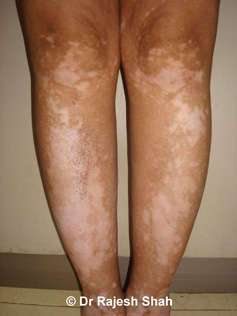What is Vitiligo?
Vitiligo is not a serious disease
 Vitiligo is a disease in which one loses some color from the skin. It is not a serious disease. Medically, it is a minor condition. However, it has more social and personal significance due to cosmetic reasons. On this website, you will find information on vitiligo on the basis of our experience in treating and documenting vitiligo cases for over 35 years. We have been able to help patients from 180+ countries. We have not cured all of them; however, we have helped most of them in different ways.
Vitiligo is a disease in which one loses some color from the skin. It is not a serious disease. Medically, it is a minor condition. However, it has more social and personal significance due to cosmetic reasons. On this website, you will find information on vitiligo on the basis of our experience in treating and documenting vitiligo cases for over 35 years. We have been able to help patients from 180+ countries. We have not cured all of them; however, we have helped most of them in different ways.
8% of the Indian and about 2% of the world population have vitiligo
Vitiligo is a disease of skin pigments called melanin. It is a disease where there is a loss of skin pigment or color, which could be due to various reasons. Vitiligo affects about 2% of the world population and about 8% of the Indian and Mexican populations. Vitiligo is not a serious disease, medically speaking. It has more social significance than medical importance, as it does not cause any major harm to the body. Cosmetically and personally, it can affect the lives of the sufferers, especially in that society, where the color of the skin is given importance, especially among brown and dark skin people.
Vitiligo is commonly misspelled as Vitilgo, Vitligo, Vitilligo, or Leukoderma. Vitiligo is called as Safed daag in Hindi and Kod in Marathi.
Why does one get vitiligo?
In simple words, vitiligo is caused by one or two of the following processes:
01 Melanin cell destruction, leading to loss of color on skin, leading to white patches of vitiligo.
02 Defective process of melanin formation; hence, no skin color formation
The exact cause for the above processes remains unknown. There are some theories that are considered responsible for the above processes in Vitiligo. The probable causes of vitiligo are explained elsewhere on this site. In brief, genetic and immunological factors in the background are considered responsible for vitiligo.
 Due to the destruction of the melanin (pigment) cells due to lesser-known processes (largely what is called an auto-immune disorder), the normal skin starts losing pigments from various parts of the skin, at a varying speed and extent. Our clinical experience based on the treatment of over 5000 cases (as of Dec 2011) suggests that there is a strong genetic factor in the background of most cases, especially those who have extensive vitiligo or those who have vitiligo affecting the finger-tips, toes, lips or genitals. The indication of a strong genetic factor is observed in the form of a family history of one or more auto-immune diseases such as vitiligo, alopecia areata, diabetes, an underactive thyroid, cancer, rheumatoid arthritis, or allergies.
Due to the destruction of the melanin (pigment) cells due to lesser-known processes (largely what is called an auto-immune disorder), the normal skin starts losing pigments from various parts of the skin, at a varying speed and extent. Our clinical experience based on the treatment of over 5000 cases (as of Dec 2011) suggests that there is a strong genetic factor in the background of most cases, especially those who have extensive vitiligo or those who have vitiligo affecting the finger-tips, toes, lips or genitals. The indication of a strong genetic factor is observed in the form of a family history of one or more auto-immune diseases such as vitiligo, alopecia areata, diabetes, an underactive thyroid, cancer, rheumatoid arthritis, or allergies.
Vitiligo sufferers are observed all over the world, including the white skin population. However, epidemiologically, most cases are recorded in India (8.8%) and Mexico. An estimated 1-2% of Americans have vitiligo, as per the survey made by the American Academy of Dermatology. Males and females are affected equally, including children of all age groups. It may begin at any age. Childhood vitiligo is not uncommon. We have registered cases as young as three months old to late-onset vitiligo at the age of 80 years.
At Life Force, we have under our care practically most nationalities (from over 182 counties) with different skins (genetically speaking) presented to us with vitiligo, which has given us the opportunity to understand this disease much better than most other regular clinics.
In short, vitiligo is not as serious a disease as it has been thought to be. However, it calls for attention as it requires to be treated and managed.
Scope of treatment
This website explains the scope of treatment of vitiligo using homeopathy. Some cases of vitiligo are fully curable, some are partly curable. Some are controllable, while some are incurable. Your doctor should be able to clearly explain to you the scope of the treatment. Please feel free to chat with our doctor for guidance.
Click here to check the factors which decided the chances of cure.
Written & Approved by-
Dr. Rajesh Shah
M.D. (Hom.)